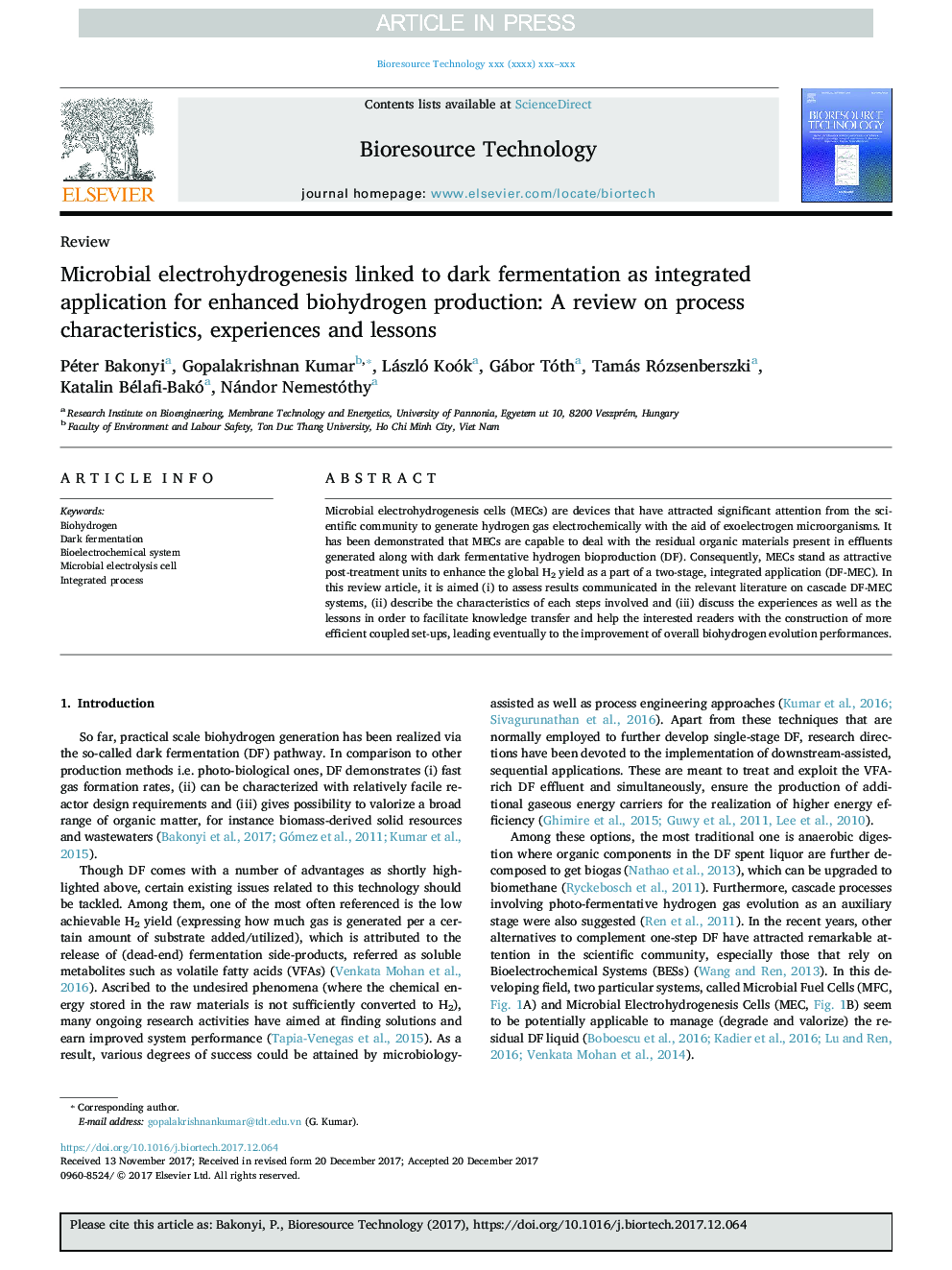| Article ID | Journal | Published Year | Pages | File Type |
|---|---|---|---|---|
| 7068444 | Bioresource Technology | 2018 | 9 Pages |
Abstract
Microbial electrohydrogenesis cells (MECs) are devices that have attracted significant attention from the scientific community to generate hydrogen gas electrochemically with the aid of exoelectrogen microorganisms. It has been demonstrated that MECs are capable to deal with the residual organic materials present in effluents generated along with dark fermentative hydrogen bioproduction (DF). Consequently, MECs stand as attractive post-treatment units to enhance the global H2 yield as a part of a two-stage, integrated application (DF-MEC). In this review article, it is aimed (i) to assess results communicated in the relevant literature on cascade DF-MEC systems, (ii) describe the characteristics of each steps involved and (iii) discuss the experiences as well as the lessons in order to facilitate knowledge transfer and help the interested readers with the construction of more efficient coupled set-ups, leading eventually to the improvement of overall biohydrogen evolution performances.
Keywords
Related Topics
Physical Sciences and Engineering
Chemical Engineering
Process Chemistry and Technology
Authors
Péter Bakonyi, Gopalakrishnan Kumar, László Koók, Gábor Tóth, Tamás Rózsenberszki, Katalin Bélafi-Bakó, Nándor Nemestóthy,
